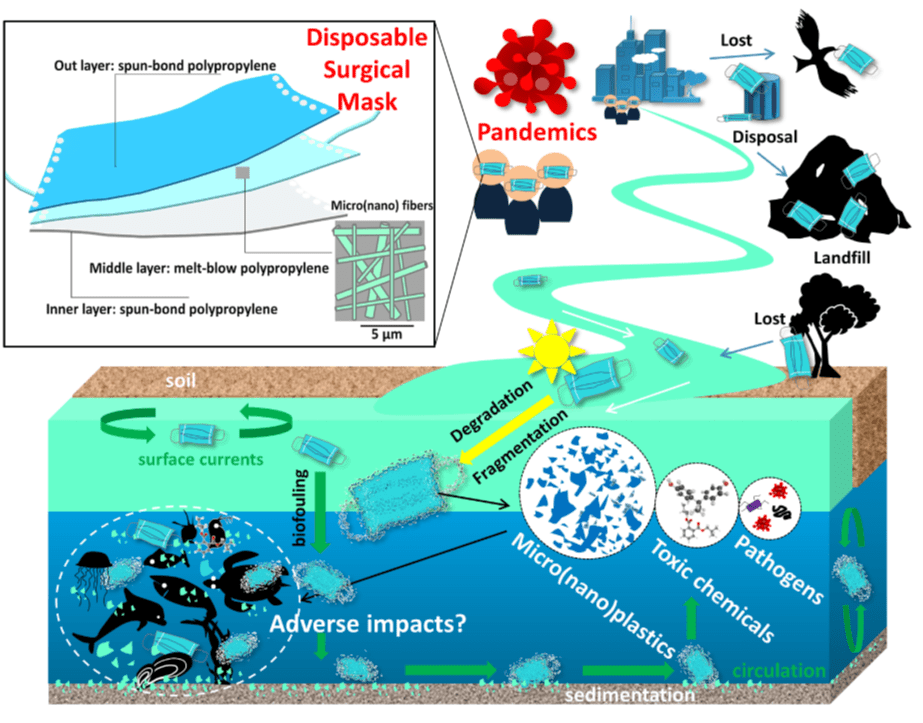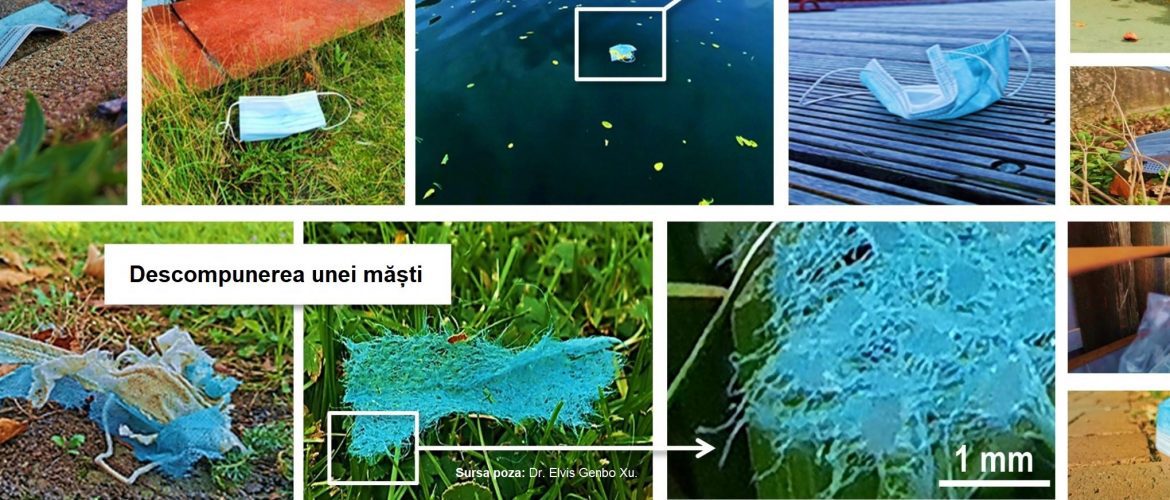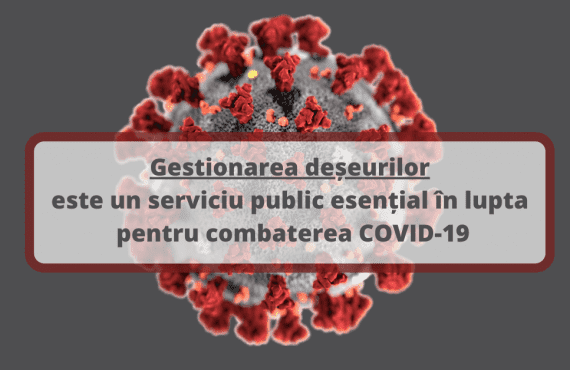Until the outbreak of the COVID pandemic, plastic waste represented one of the most obvious sources of environmental pollution, difficult to manage, being produced over 300 million tons globally, 90 % of which are no longer recycled.
Unfortunately, the pandemic has triggered an eminent danger to environmental security, due to the production and consumption of enormous amounts of protective materials, including masks. Recent studies estimate a global monthly consumption of 129 billion masks or 3 masks per minute, most of which are disposable masks made of microfiber.
The enormous production of single-use masks is on a similar scale to that of plastic bottles, which is estimated at 43 billion per month. However, unlike plastic bottles (of which approximately 25% are recycled), for waste masks there is no official guidance/methodology on recycling technology, which is why they most likely end up being disposed of as solid waste.

As an example, common disposable surgical masks are made up of 3 layers. The outer layer is polyester (non-absorbent material) that protects against liquid splashes. The middle layer is made of polypropylene and polystyrene, to prevent the passage of droplets and aerosols through an electrostatic effect. The inner layer is made of an absorbent material such as cotton to absorb the vapor. Of the multitude of polymers used, the largest part is polypropylene, the frequent use of which has led to enormous amounts of plastic accumulated in the environment.
Once in the environment, the mask is exposed to solar radiation and heat, but the degradation of polypropylene is restrained due to its hydrophobicity and high molecular weight. These properties recalcitrant lead to persistence and accumulation in the environment. As a result, polypropylene gradually degrades in a relatively short period (weeks) into smaller sized particles – microplastics (<5 mm), followed by even smaller particles, nanoplastics (<1 mm).
In the absence of possibilities to treat these contaminated wastes by incineration or co-incineration at the national level, they end up in landfills, representing real facilitators for the spread of the SARS-CoV-2 virus. Taking into account that the number of the population of the Republic of Moldova at the beginning of 2020, according to the data presented by the NBS was 2.64 million people, even if 10 % of the masks were incorrectly disposed of, this would lead to more than 264 thousand masks daily dispersed in nature. Given that the weight of each mask is about 4 grams, this would lead to the dispersion of more than 32 tons of plastic in nature/monthly or more than 380 tons annually (which becomes microplastic): a very dangerous scenario that must be categorically avoided (data estimated by AO Association for Waste Recovery).
"Coronavirus may never go away, just become another virus in our communities", (source: WHO told BBC News, 14 May 2020). In this case, it is imperative to launch coordinated efforts with the involvement of competent authorities, environmental scientists, medical agencies and solid waste management operators with the participation of the general public, in order to minimize the negative impact of the disposal of ever-increasing amounts of masks, preventing a new environmental problem too hard to solve.
Source: https://link.springer.com/article/10.1007/s11783-021-1413-7


